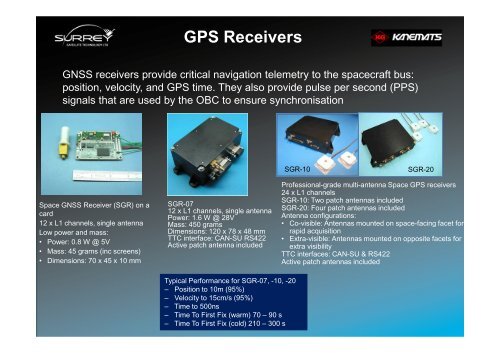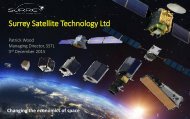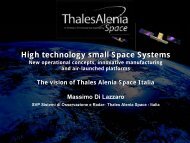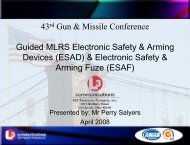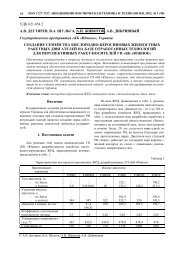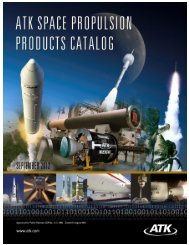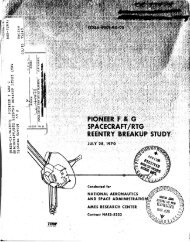Create successful ePaper yourself
Turn your PDF publications into a flip-book with our unique Google optimized e-Paper software.
GPS Receivers<br />
GNSS receivers provide critical navigation telemetry to the spacecraft bus:<br />
position, velocity, and GPS time. They also provide pulse per second (PPS)<br />
signals that are used by the OBC to ensure synchronisation<br />
SGR-10<br />
SGR-20<br />
Space GNSS Receiver (SGR) on a<br />
card<br />
12 x L1 channels, single antenna<br />
Low power and mass:<br />
• Power: 0.8 W @ 5V<br />
• Mass: 45 grams (inc screens)<br />
• Dimensions: 70 x 45 x 10 mm<br />
SGR-07<br />
12 x L1 channels, single antenna<br />
Power: 1.6 W @ 28V<br />
Mass: 450 grams<br />
Dimensions: 120 x 78 x 48 mm<br />
TTC interface: CAN-SU RS422<br />
Active patch antenna included<br />
Professional-grade multi-antenna Space GPS receivers<br />
24 x L1 channels<br />
SGR-10: Two patch antennas included<br />
SGR-20: Four patch antennas included<br />
Antenna configurations:<br />
• Co-visible: Antennas mounted on space-facing facet for<br />
rapid acquisition<br />
• Extra-visible: Antennas mounted on opposite facets for<br />
extra visibility<br />
TTC interfaces: CAN-SU & RS422<br />
Active patch antennas included<br />
Typical Performance for SGR-07, -10, -20<br />
– Position to 10m (95%)<br />
– Velocity to 15cm/s (95%)<br />
– Time to 500ns<br />
– Time To First Fix (warm) 70 – 90 s<br />
– Time To First Fix (cold) 210 – 300 s


